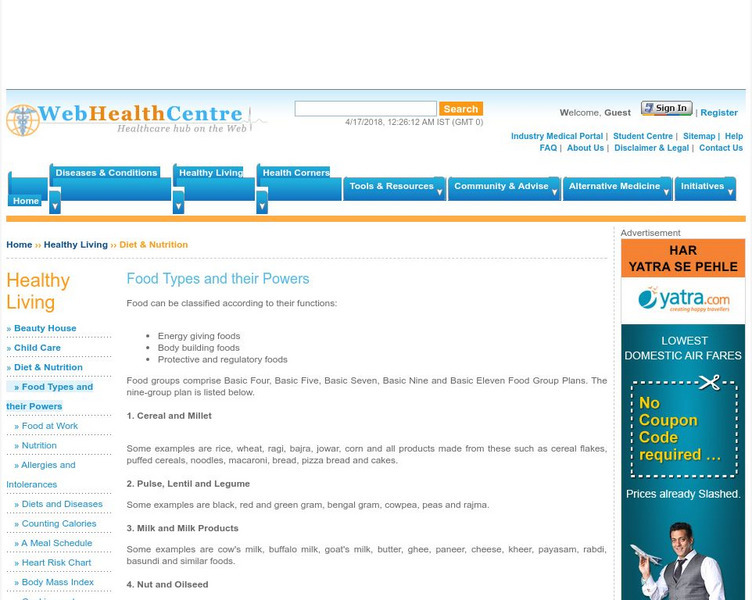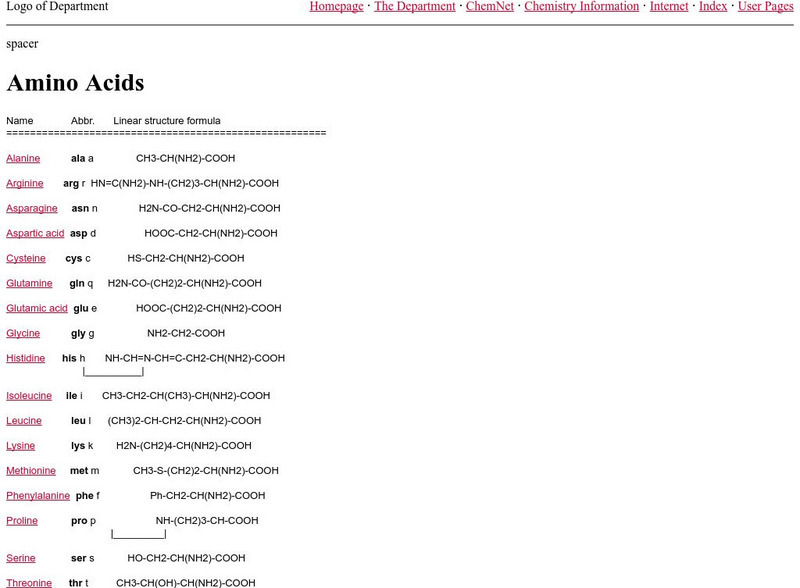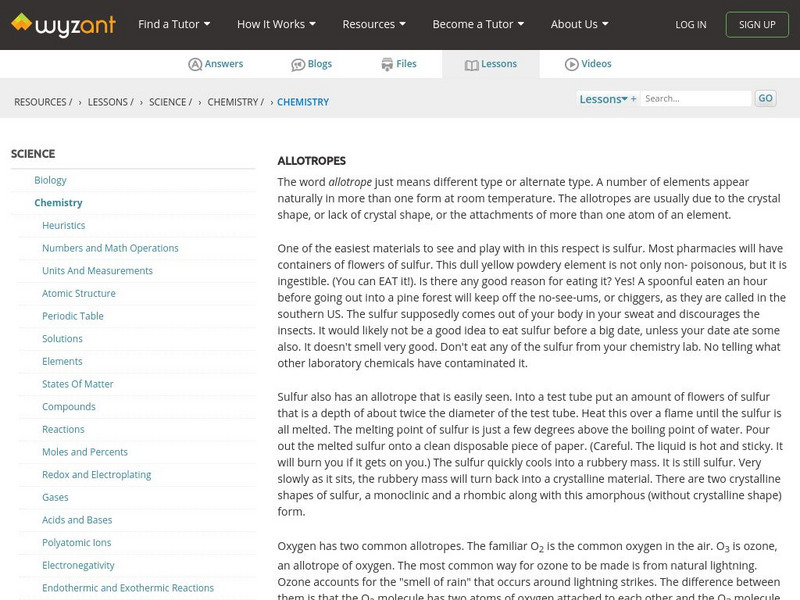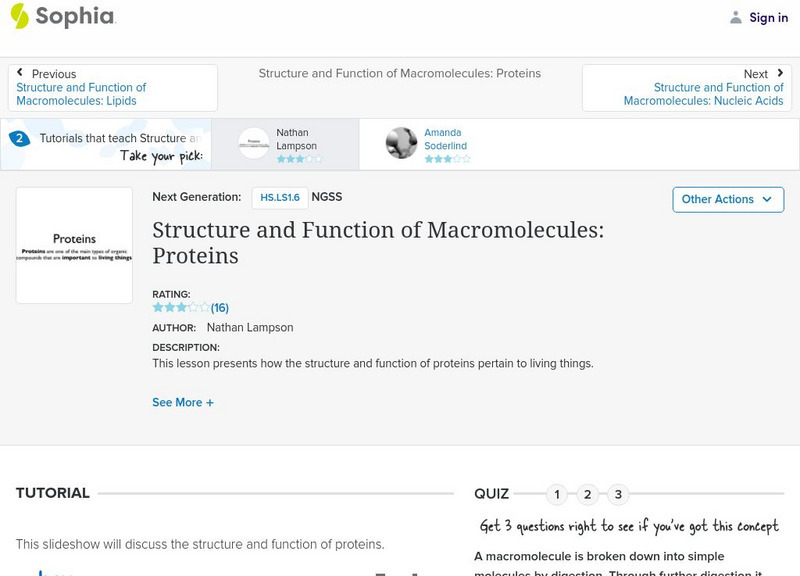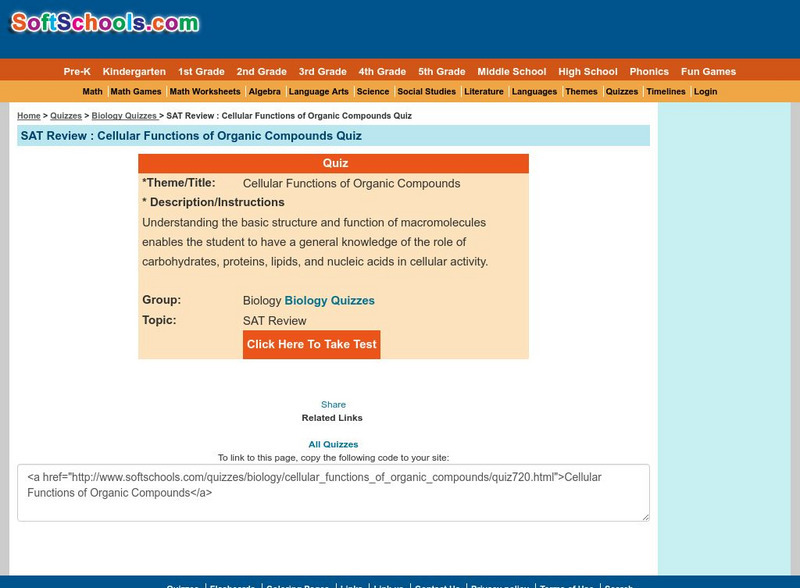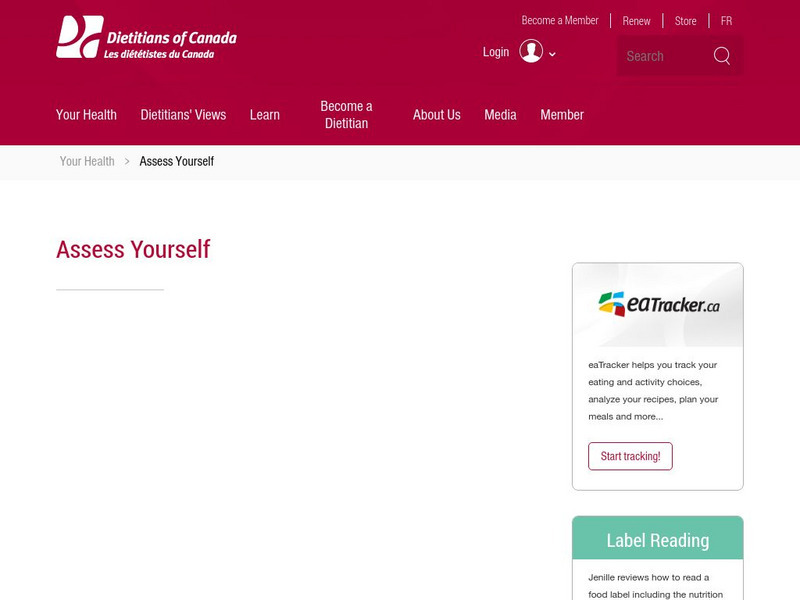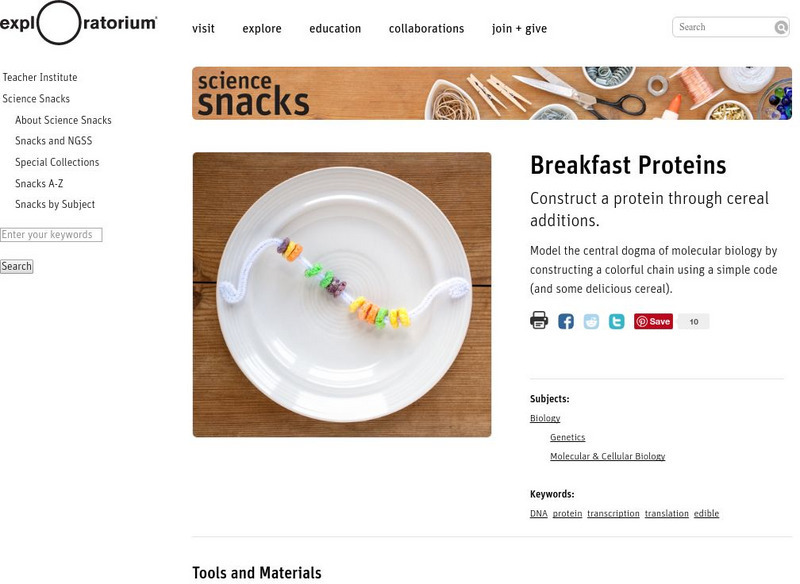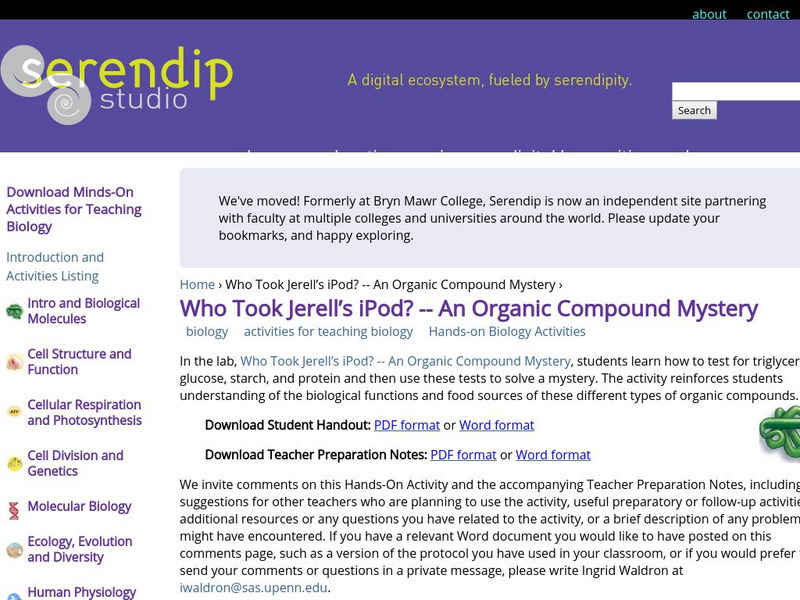Other
Web Health Centre: Food Types and Their Powers
This website describes the nutritional values of different types of foods. Learn what types of foods are sources of carbohydrates, proteins, fats, vitamins, and minerals through a chart provided at the bottom of the page.
Other
Center for Game Science: Fold It
A game where students put amino acids together to form a protein. Students will also try to predict how that protein will fold. Since the function of a protein depends a lot on the structure, this game can help students understand the...
Other
Institute of Chemistry: Amino Acids
Clickable list of links to descriptions and models of 20 amino acids, including classification and structure.
Indiana University
Area 10 Math and Technology Project: Nutrition Labels
Lesson Plan involving all aspects of reading a nutrition label. Emphasizes math skills. Includes links to a teacher outline, student copies and reference materials.
National Health Museum
Nhm: Amino Acid Sequences Show Evolution
This lesson plan focuses on differences in the amino acid sequence of hemoglobin and myoglobin proteins. They use the number of differences to create a phylogenetic tree.
Exploratorium
Exploratorium: Science Snacks: Milk Makes Me Sick
This activity will use glucose strips to explore the function of lactase enzyme in milk. Students will try to understand the lactase enzyme to figure out the basics of lactose intolerance.
US Department of Agriculture
Usda: Tips to Help You Make Wise Protein Food Choices
Make wise choices when eating from the protein group. This website advises you to eat lean cuts of beef, trim visible fat off of meat and poultry, eat fish "rich in omega-3 fatty acids," and read food labels for nutritional information.
Wyzant
Wyzant: Chemistry: Terms
This lesson provides a list of chemical terms, defines them, and uses examples to describe and explain each. These include allotropes, ionic compounds, methane, carbon dioxide, alkali flats, blue vitriol, and others.
Chem4kids
Chem4 Kids: Proteins
Here you can find some great information about proteins. Learn about a protein's primary structure, secondary structure, tertiary structure, and quaternary structure.
CK-12 Foundation
Ck 12: Physical Science: Biochemical Compound Classification
[Free Registration/Login may be required to access all resource tools.] Biochemical compounds: their general structure and different classes.
Genome British Columbia
Genome British Columbia: Dna Code Bracelet
For this activity, students create a bracelet of beads using DNA code. Each letter represents an amino acid and is three beads. The authors suggest that even younger students would enjoy this activity, although older students will...
Sophia Learning
Sophia: Structure and Function of Macromolecules: Proteins
Find out about some examples of living things which contain abundant amounts of protein.
Soft Schools
Soft Schools: Molecules of Life Quiz
Take an interactive quiz over the molecules of life. After completing the quiz, check your score, and then revisit any incorrect question for further review.
Soft Schools
Soft Schools: Cellular Functions of Organic Compounds Quiz
Take an interactive quiz over organic compounds. After completing the quiz, check your score, and then revisit any incorrect question for further review.
Other
Dieticians of Canada: Assess Yourself
Learn about your diet, BMI, and more with this resource from the Dieticians of Canada.
Exploratorium
Exploratorium: Science Snacks: Breakfast Proteins
Model the process of transcription and translation with this simple activity using cereal chains.
Nobel Media AB
The Nobel Prize: Dna Rna Protein
Through illustrations and data, viewers will understand either basic or advanced levels of DNA replication, RNA transcription, and protein translation. Click on images to move through this interactive program.
Bryn Mawr College
Serendip: Who Took Jerell's I Pod? An Organic Compound Mystery
Brief text summary of what young scholars learn in the Who Took Jerell's iPod? lab along with links to download Student Handouts and Teacher Preparation Notes in PDF or Word formats. Students are challenged to solve a mystery by testing...
University of Arizona
The Biology Project: The Chemistry of Amino Acids
A great site for understanding Amino Acids, the building blocks for protein. Besides a very complete summary, the site includes a complete list of amino acids, a link to basic amino acid structure, a list if atoms in amino acids, and...
BBC
Bbc: Gcse Bitesize: Reproduction, the Genome and Gene Expression
This lesson focuses on how genes, sections of the DNA, are formed including descriptions of transcription and translation. It provides links to a video and a test.
Other
Kids' World Nutrition Information: Understanding Food Labels
In order to plan a healthy diet, students must know how to read a food label. Food labels show that a food has a little or a lot of certain nutrients. Look on the side of a product to find the Nutrition Facts title, which is fully...
CK-12 Foundation
Ck 12: Life Science: 13.9 Translation
Understand the process of reading the mRNA code in the ribosome to make a protein during translation.
Science Buddies
Science Buddies: Turn Milk Into Plastic!
In this hands-on lesson plan, students will conduct a simple milk-transforming experiment to explore how plastics can be derived from a natural resource such as milk.


